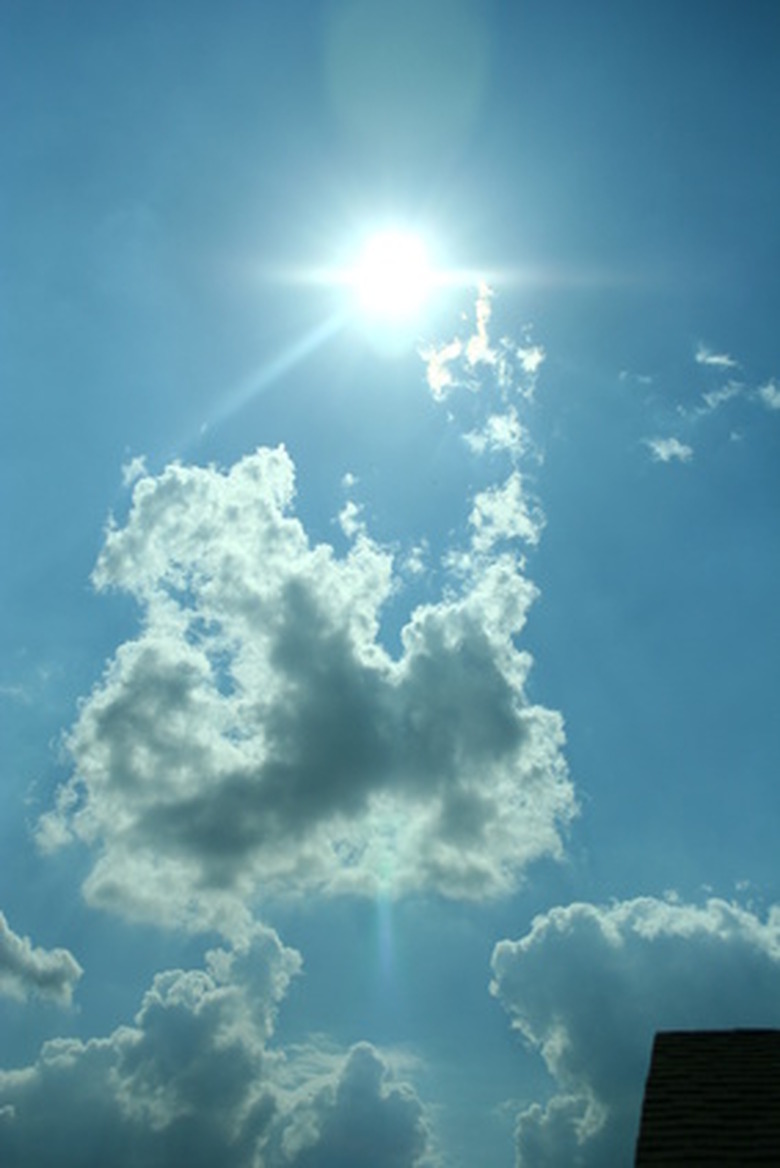School Projects On Sun Models
Studying celestial bodies like the sun can be aided by the construction of simple models. Our nearest star is made up of multiple layers, densities and atomic activity. It is also large enough to hold around a million Earths inside. Create a hanging solar system or build small clay models. Whichever activities you choose, make sure to decorate your sun model with craft paint and create appropriate labels. Completing a small earth model, in relative scale to the sun, can exemplify the actual size of this fiery mass. Use visual references from textbooks and other reputable scientific resources.
Hanging Sun
Hanging Sun
Use a papier-mache technique to form a sun model that you can hang with string or fishing line. Wrap the wet plaster casting strips around a round inflated balloon and let dry. Make sure to create a notch at the top of the sphere to allow it to hang. Decorate with craft paint and display. Creating the nearby planets to hang around your sun will make the project even more interesting and useful. Remember to investigate the relative size differences of the planets in reference to each other, as well as compared to the sun. Though creating a sun with a diameter that is a hundred times larger than that of your nearby earth sculpture might be out of the question, make sure that the size differences are enough to convey the sun's enormous mass.
Standing Sun Model
Standing Sun Model
Create a standing clay model of the sun. Use air drying or bake-able clay and craft paints to finish the piece. You can also create a half sphere or a 3/4 sphere. This will allow the students to differentiate and label the inner layers of the sun. The inner core, radiative zone, convection zone, subsurface flows and photosphere can be represented with contrasting colors to enhance their individual representations. Create a small earth to display next to the sun model to give an idea of the vast difference in size.
Sun Activity Models
Sun Activity Models
Create multiple small spherical papier-mache or clay models of the sun. Use the creations to show the different phases of solar activity like the appearance and activity involved with sun spots and solar flares. When molding your sun models you can add large peaks and valleys to represent these phenomena. If using bake-able clay, make sure to let it cool completely before decorating. Bring the objects to life with craft paint. Label the objects and list information that explains the conditions required for their activity, as well as their relation to one another.
Life Cycle of the Sun
Life Cycle of the Sun
Create multiple papier-mache or clay models representing the life cycle of our sun. It has enough fuel to last another 5 billion years, but will eventually go through physical and chemical changes at it ages and dies. The star will eventually transform into a red giant as well as a white dwarf. Represent these phases with corresponding colors using craft paint. During the sun's aging and dying process it will also vary in size and mass. Labeling each individual phase with appropriate terminology and physical occurrences will enhance the learning aspect of the project.
Cite This Article
MLA
Slate, David. "School Projects On Sun Models" sciencing.com, https://www.sciencing.com/school-projects-sun-models-7838423/. 24 April 2017.
APA
Slate, David. (2017, April 24). School Projects On Sun Models. sciencing.com. Retrieved from https://www.sciencing.com/school-projects-sun-models-7838423/
Chicago
Slate, David. School Projects On Sun Models last modified March 24, 2022. https://www.sciencing.com/school-projects-sun-models-7838423/
